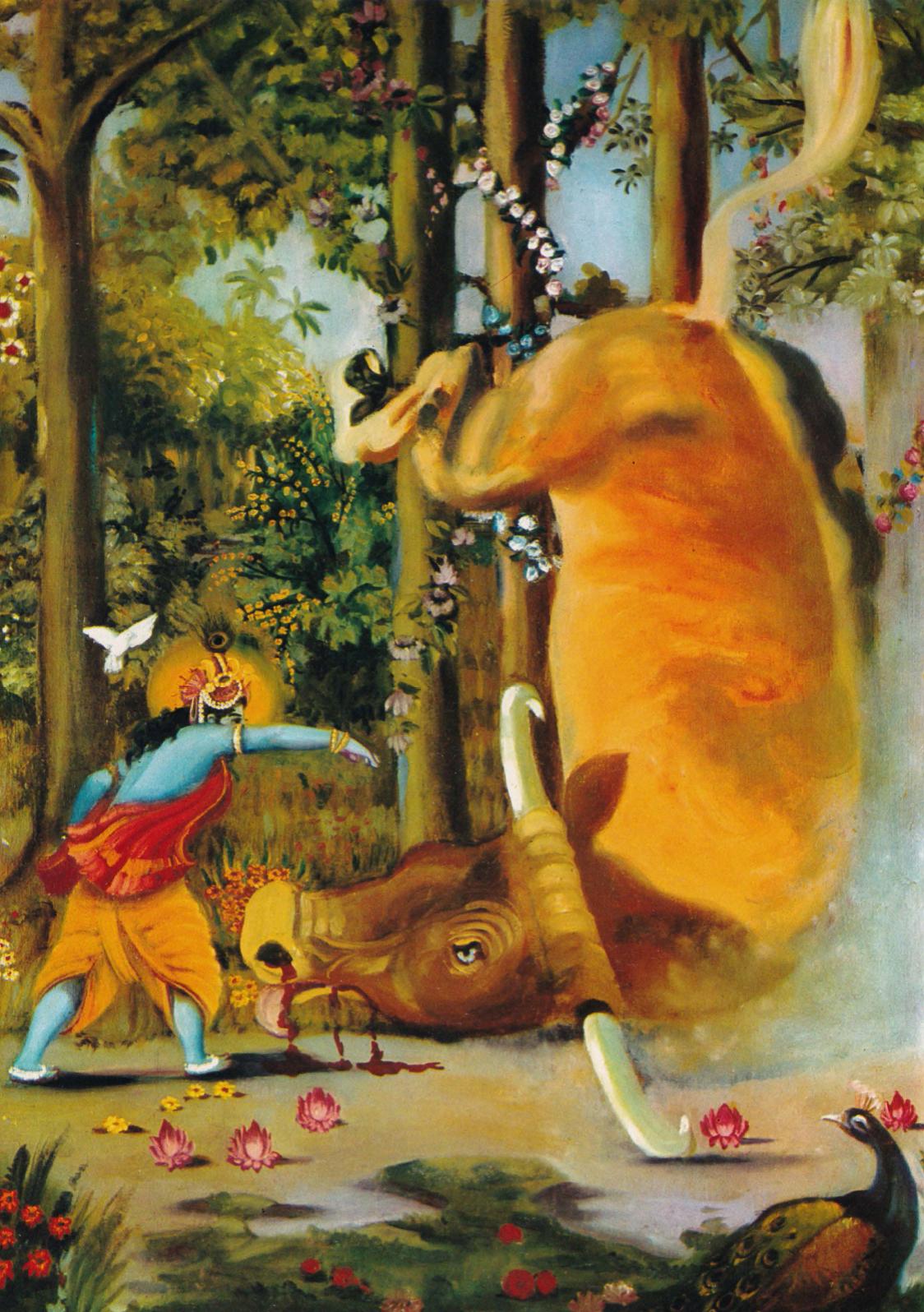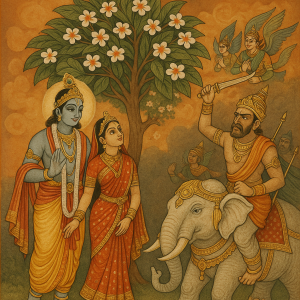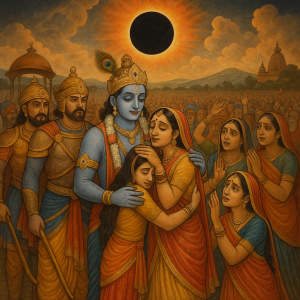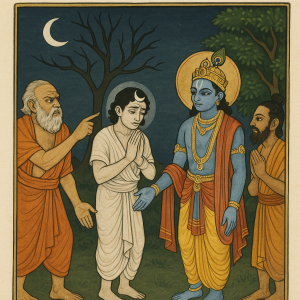A New Threat to Vṛndāvana
After the enchanting pastime of the Rāsa-līlā, Vṛndāvana once again echoed with the sweet flute of Śrī Kṛṣṇa. The gopas, gopīs, and cows roamed freely under His protection, living in joyous simplicity. But the evil-minded Kaṁsa, ruler of Mathurā and sworn enemy of Kṛṣṇa, continued plotting His destruction.
Determined to eliminate the boy who was destined to kill him, Kaṁsa sent another dreadful demon—Ariṣṭāsura, a fierce and massive being in the form of a wild bull.
The Arrival of the Demon
One evening, as the sun dipped behind the Govardhana hills and the cowherd boys were returning home, the earth suddenly trembled beneath heavy hooves. From the northern forest stormed Ariṣṭāsura, his form towering like a black mountain, with fiery red eyes, horns sharp as thunderbolts, and foul-smelling breath that scorched the grass.
He charged through the pastures, goring trees and scattering cows, his roar echoing like a thousand storms. The Vrajavāsīs screamed and ran in fear. Even the animals trembled.
Kṛṣṇa Confronts the Demon
When Kṛṣṇa saw His dear Vraja disturbed, He turned to face the demon with a calm and confident gaze. The Supreme Lord, though appearing like a tender youth, stood firm like a lion before a charging beast.
He rebuked the demon:
“O foolish one! How dare you disturb My devotees and desecrate this sacred land! You wear the form of a bull, but you are no dharmic beast. You are a hypocrite, posing as sacred while spreading terror. Now I shall end your cruelty.”
The Battle
Ariṣṭāsura roared and rushed at Kṛṣṇa, lowering his deadly horns to pierce the Lord. But Kṛṣṇa effortlessly leapt aside and struck the demon’s back with His lotus foot, sending him staggering. The earth shook. Then Ariṣṭāsura charged again with blinding speed.
This time, Kṛṣṇa grabbed his horns, twisted his neck with divine strength, and threw the beast to the ground.
As the demon attempted to rise, Kṛṣṇa kicked him with His lotus foot, shattering his spine and ribs. Blood gushed from the demon’s mouth, and with a final cry, Ariṣṭāsura fell lifeless, shaking the forest floor.
The Joy of Vṛndāvana
The Vrajavāsīs emerged from their hiding places, dancing and cheering in delight. The cows gathered near Kṛṣṇa, licking His hands. The gopīs sang songs of victory, and Nanda and Yaśodā embraced their beloved son, their eyes filled with tears.
The residents of Vraja once again realized: As long as Kṛṣṇa is with us, no evil can touch us.
Another Step Toward Kaṁsa’s End
With every demon destroyed, Kaṁsa’s fear deepened. The day of his downfall was drawing near, and he knew—Kṛṣṇa was no ordinary boy. He was the death of all unrighteousness, Yogeśvara, the Lord of all mystics, walking in Vṛndāvana’s fields.
Lessons to Be Learned:
- The Lord does not tolerate hypocrisy, even if it hides behind symbols of dharma.
- Kṛṣṇa is the true protector—when He is present, no force of evil can prevail.
- The demons represent inner enemies—lust, pride, violence—which must be slain by divine grace.
- Even the strongest opposition crumbles before the lotus feet of the Lord.
- Kṛṣṇa’s love for Vṛndāvana compels Him to destroy all threats with joy and beauty.
Origin of the Story: Harivaṁśa Purāṇa – Viṣṇu-parva, Chapter 68



